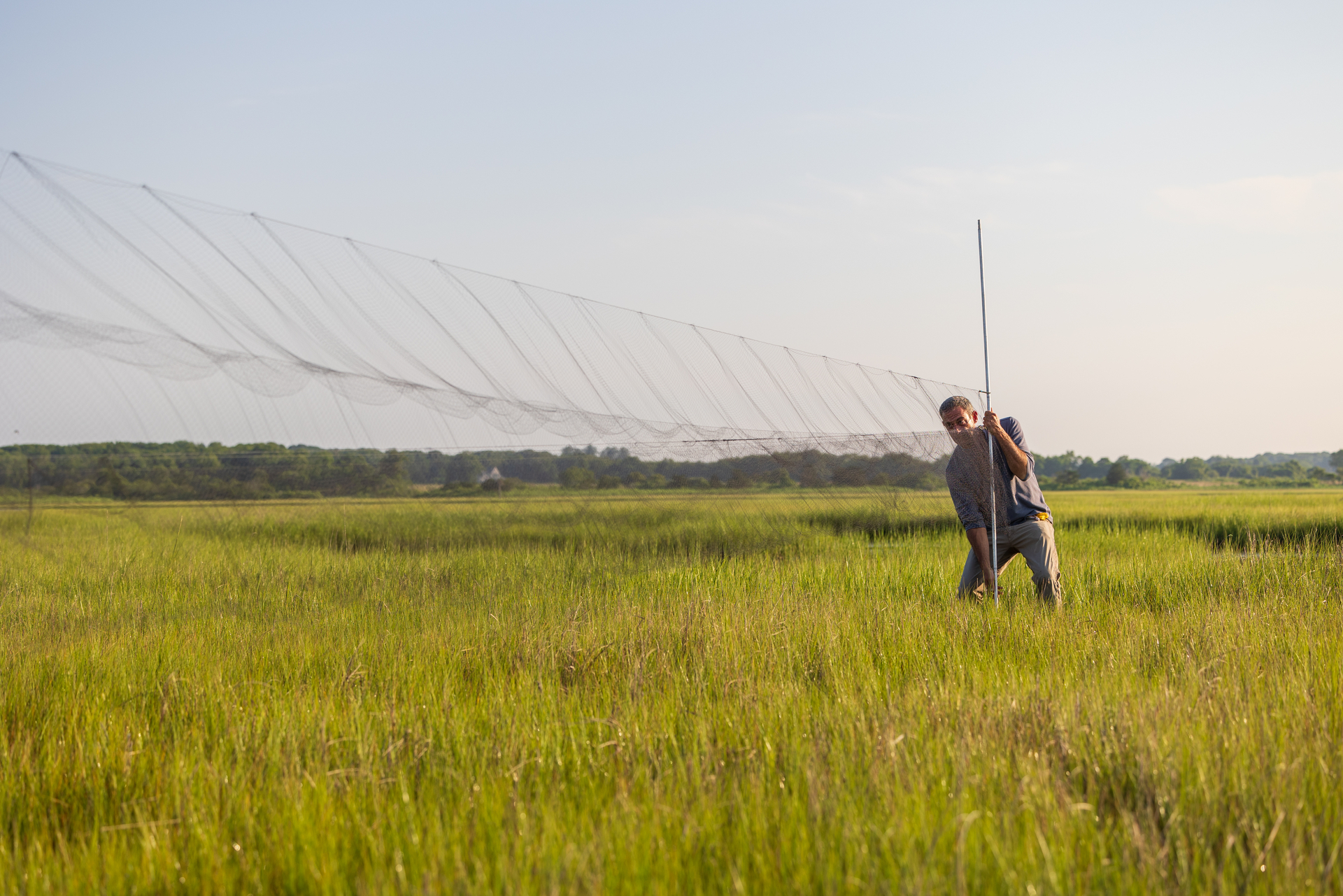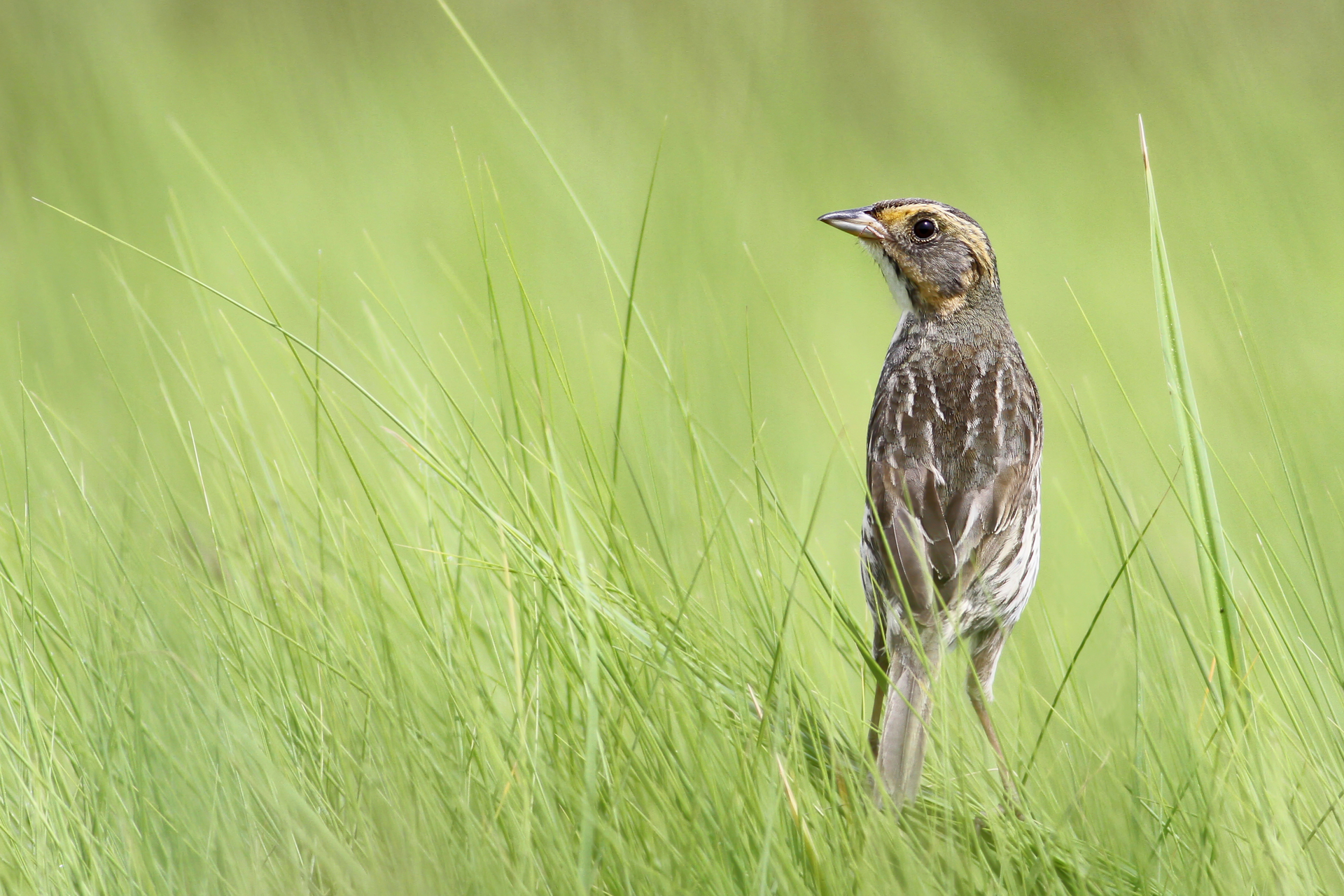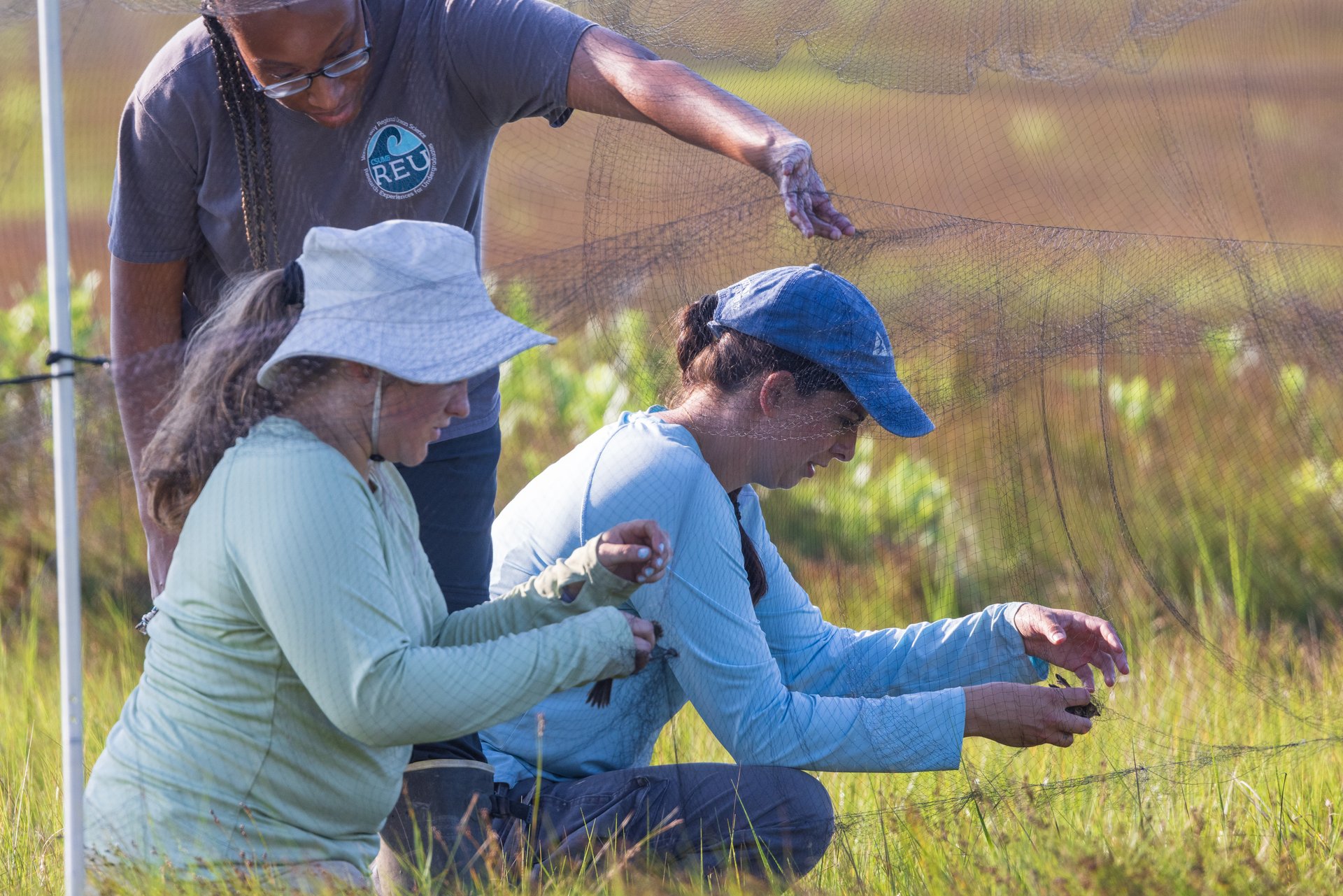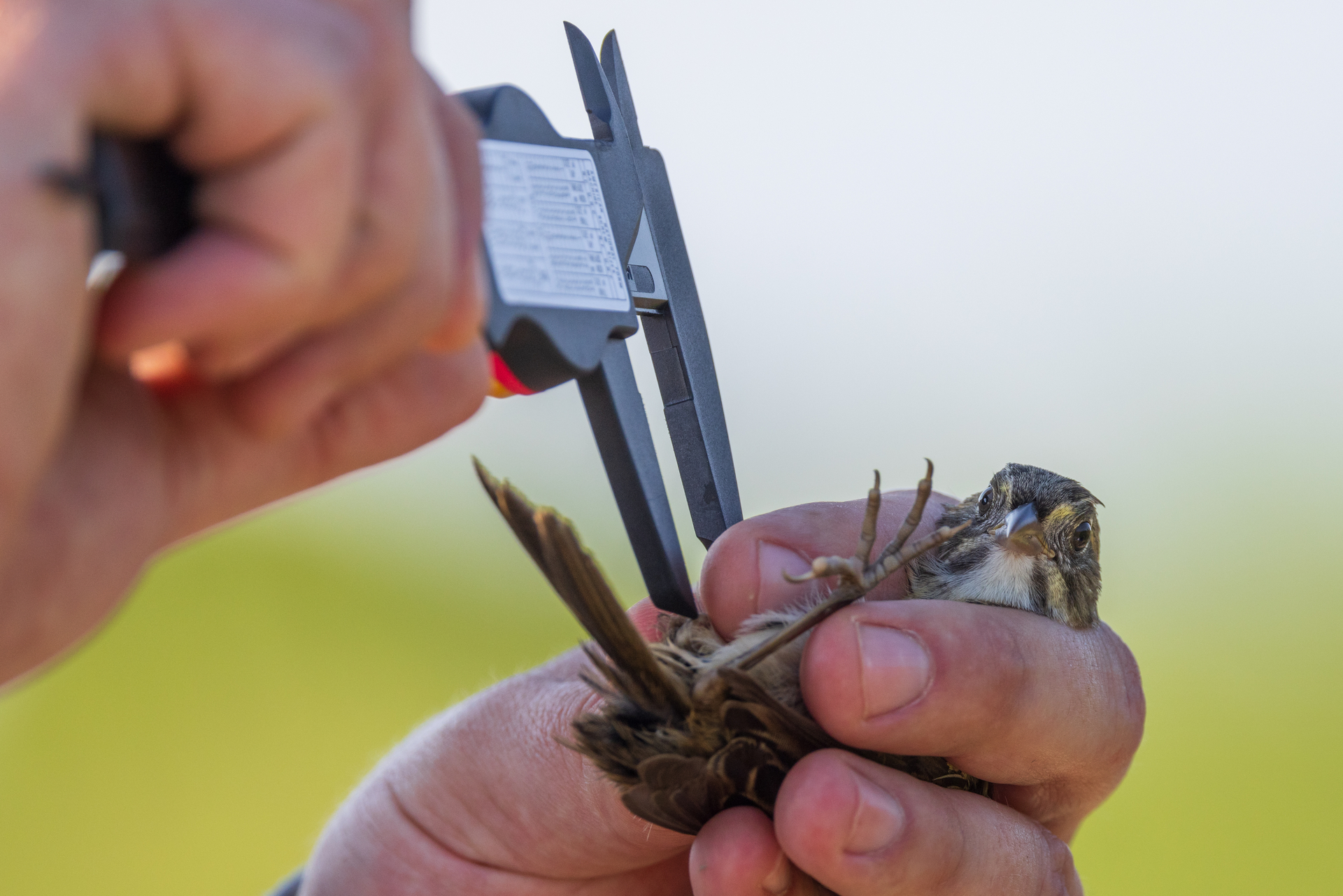Saltmarsh Sparrows live on the cutting edge of the struggle to adapt to climate change.
These pocket-sized, orange-cheeked sparrows nest only in salt marshes. While this unique band of coastal wetland habitat has always been narrow, the impacts of climate change are making it razor thin.
In addition to providing critical habitat for wildlife, salt marshes protect coastal communities from flooding, improve water quality, and absorb and store heat-trapping pollution from the atmosphere. Mass Audubon is working to restore wetlands along Massachusetts’s coast to health. But with sea levels rising every year, our team is racing to restore coastal ecosystems before salt marshes—and the species that depend on them—are lost forever.
A Canary in the Coal Mine
Scientists have often studied birds to assess the health of the environment. In the late 1800s and early 1900s, miners carried canaries into coal mines because the birds would sicken in the presence of toxic gases before humans did, giving miners a warning to escape.
Similarly, Saltmarsh Sparrows are extraordinarily vulnerable to wetland degradation, so their health indicates how coastal ecosystems are adapting to climate change.
Nesting just above the average high tide line, Saltmarsh Sparrows have always lived a precarious existence. Extreme high tides and storms often flood their nests, washing their eggs away or drowning their chicks. Now, rising sea levels drive storms and extreme tides higher into marshes, making it difficult for Saltmarsh Sparrows to find anywhere to safely raise their chicks.
Once upon a time, salt marshes would slowly “migrate” inland with rising sea levels. However, sea walls, embankments, dams, and stands of invasive species along much of the Massachusetts coastline prevent marshes from migrating, causing them to be flooded and destroyed. To make matters worse, humans have manipulated salt marshes to graze livestock or grow crops, creating networks of channels and dikes that disrupt the natural flow of water.
Sea level rise and historic wetland disruption have created a grim situation for Saltmarsh Sparrows. Since 1998, four out of five Saltmarsh Sparrows have disappeared. Without intense conservation efforts, scientists predict that they could become extinct by 2050.
A Wetland Transformed
Allens Pond Wildlife Sanctuary in Dartmouth and Westport is a gorgeous landscape of salt marshes, woodlands, and beaches. But historic manipulation had severely degraded the health of its wetlands. With support from the Environmental Protection Agency’s Southeast New England Program, Mass Audubon restored 40 acres of salt marsh at Allens Pond—and the results have been nothing short of transformative.
Our scientists and many volunteers worked to restore the marsh by removing barriers to marsh migration such as walls, dikes, and stands of invasive species, and digging “runnels” to allow better drainage of areas at risk of flooding.
Since the end of the project, Mass Audubon scientists have studied bird populations at Allens Pond to gauge its success. This summer, our team safely captured and banded more than 250 Saltmarsh Sparrows, a high number to find at a single site. These birds are only a small sample of the total number at the wildlife sanctuary. Scientists have also observed many newly hatched Saltmarsh Sparrows and more than 150 nests, proving that these birds are successfully reproducing.
Mass Audubon staff carefully measure the length of an adult Saltmarsh Sparrow. Collecting hands-on data is an important tool for tracking the impact of climate change.
In addition, all three of the other Massachusetts birds that nest only in salt marshes—Seaside Sparrows, Clapper Rails, and Eastern Willets—have also been spotted. Finding these species at a single location is exceptionally rare in Massachusetts and suggests that Allens Pond has become a globally important habitat for salt marsh-dependent birds.
Bringing Salt Marsh Restoration Statewide
While birds are thriving at Allens Pond, this wildlife sanctuary represents a tiny fraction of the thousands of acres of salt marsh in Massachusetts that are threatened by sea level rise. To protect Saltmarsh Sparrows and coastal communities, dozens more ecological restoration projects will be necessary.
Unfortunately, well-intentioned but outdated rules are delaying projects to a pace that will be too slow to save many of our salt marshes. Laws adopted decades ago to protect wetlands from development and pollution are not easily adapted for projects that restore wetlands. This means that projects as simple as removing a stone wall constraining a marsh or digging drainage runnels must wait years and spend hundreds of thousands of dollars securing up to a dozen permits.
Mass Audubon is advocating to change the system so that wetlands restoration projects can begin without years of delay. Sea level rise isn’t waiting, so neither can we.
Stay Connected
Don't miss a beat on all the ways you can get outdoors, celebrate nature, and get involved.






